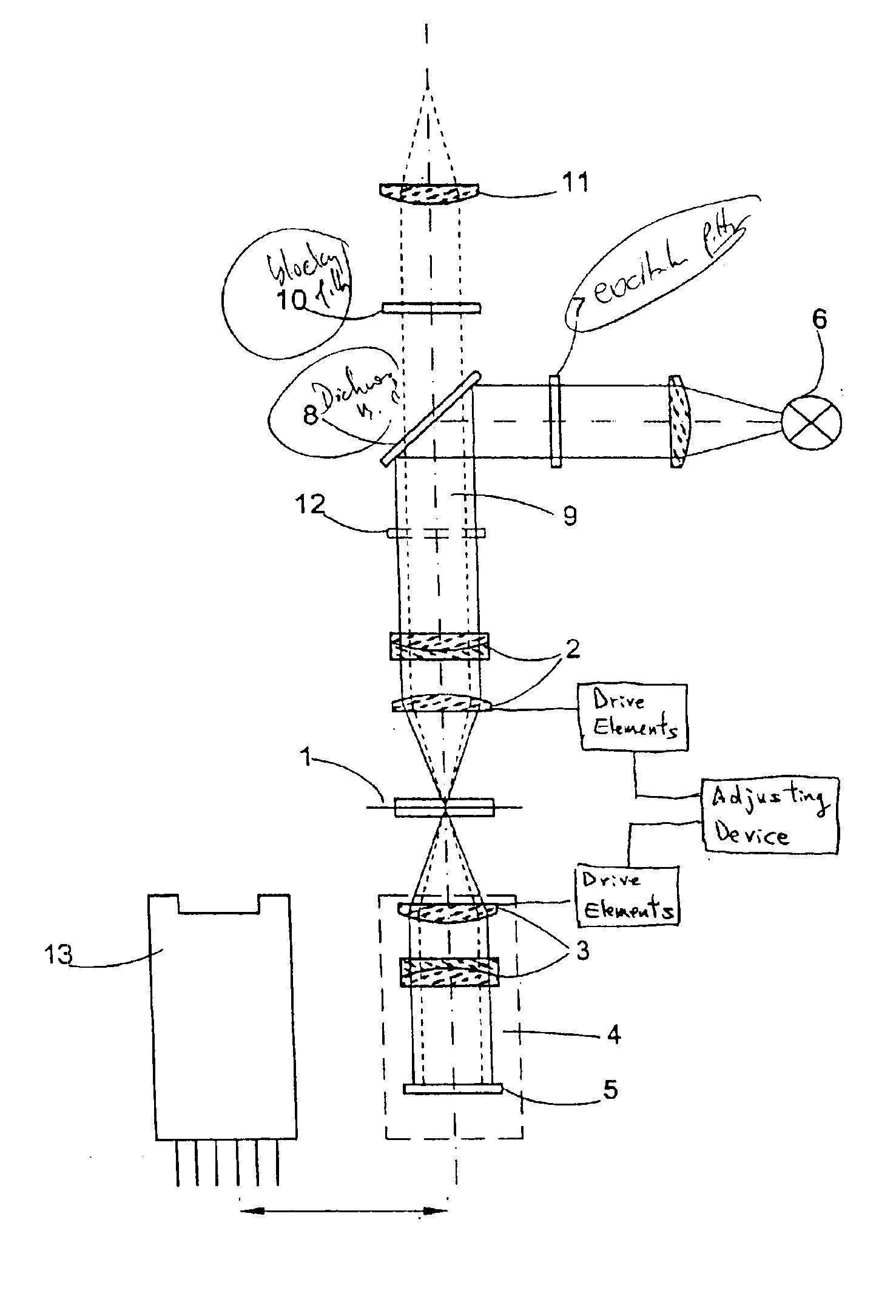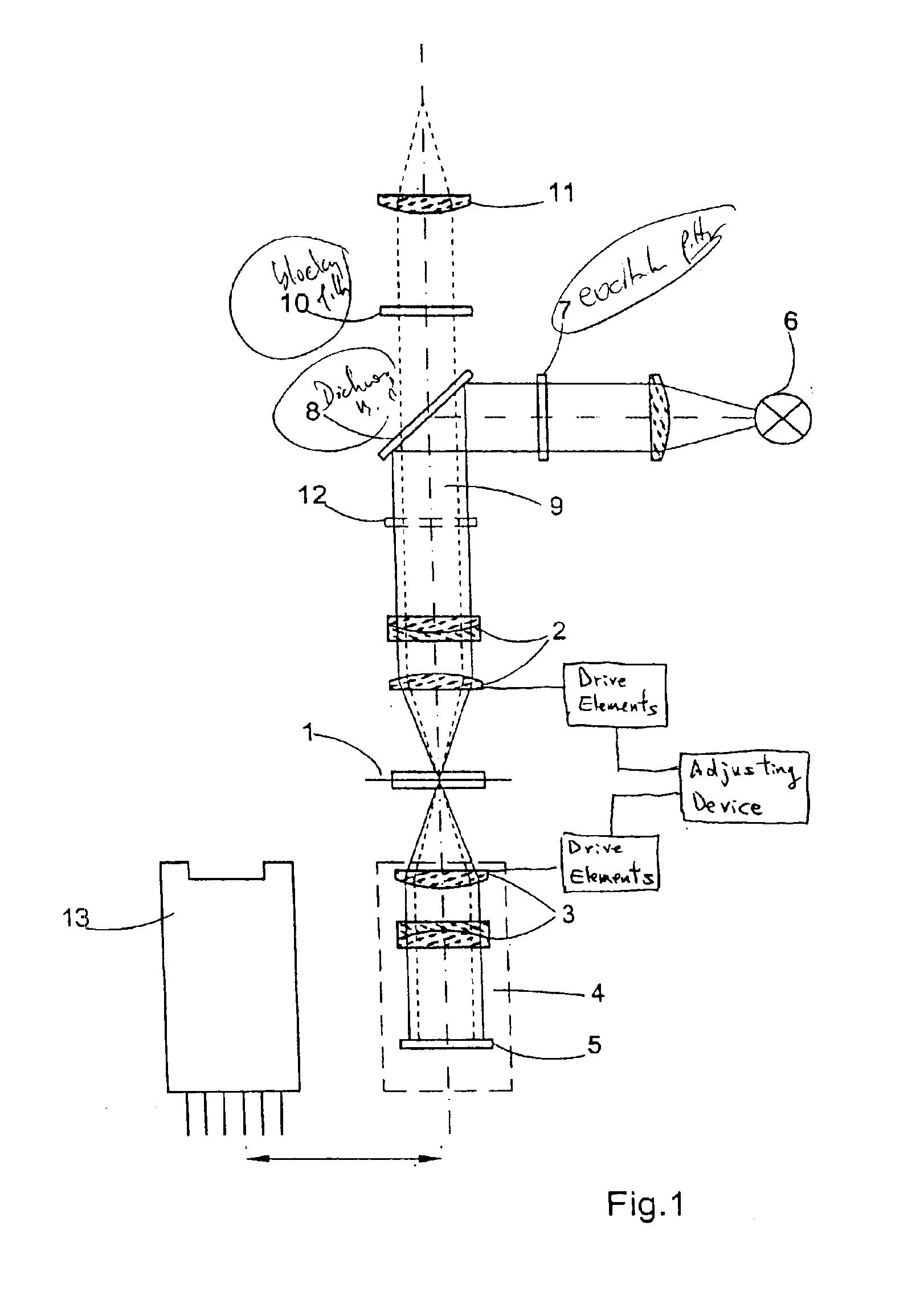Microscope for reflected-light and transmitted-light microscopy
a microscope and light transmission technology, applied in the field of microscopes, can solve the problems of alignment errors, poor contrast, relatively weak lighting of objects to be observed, etc., and achieve the effect of high resolution
- Summary
- Abstract
- Description
- Claims
- Application Information
AI Technical Summary
Benefits of technology
Problems solved by technology
Method used
Image
Examples
Embodiment Construction
In FIG. 1, a specimen 1 is received between the microscope objective 2 and another objective 3 which is identical to the microscope objective 2 with respect to its optical characteristics and which is part of a reflecting device 4. Optimum resolutions result when, for example, planaprochromats with a numerical aperture greater than or equal to 1.4 are used for both objectives 2, 3.
It is further advantageous when the preparation is received between two identical, high-grade cover glasses which ensure a perfectly symmetrical beam path.
A mirror 5 which reflects the light transmitted through the specimen 1 back into itself exactly is arranged in the reflecting device 4 following the objective 3. The reflecting surface of the mirror 5 is not plane, but rather has a sphere which is adapted to the wavefront of the objective 3 to a first approximation. In a particularly preferred manner, the mirror surface is curved aspherically and adapted to the output wavefront of the objective 3.
Particu...
PUM
 Login to View More
Login to View More Abstract
Description
Claims
Application Information
 Login to View More
Login to View More - R&D
- Intellectual Property
- Life Sciences
- Materials
- Tech Scout
- Unparalleled Data Quality
- Higher Quality Content
- 60% Fewer Hallucinations
Browse by: Latest US Patents, China's latest patents, Technical Efficacy Thesaurus, Application Domain, Technology Topic, Popular Technical Reports.
© 2025 PatSnap. All rights reserved.Legal|Privacy policy|Modern Slavery Act Transparency Statement|Sitemap|About US| Contact US: help@patsnap.com



